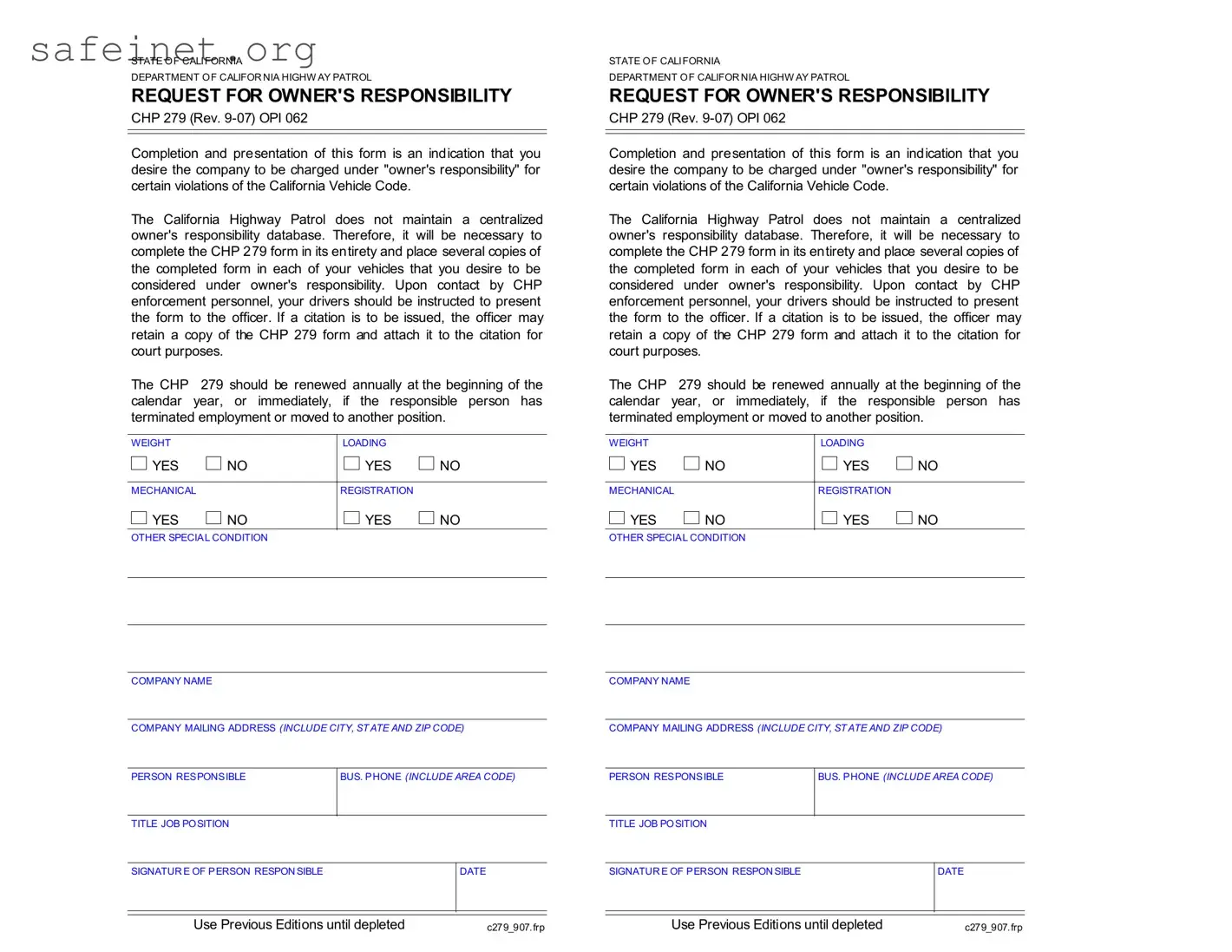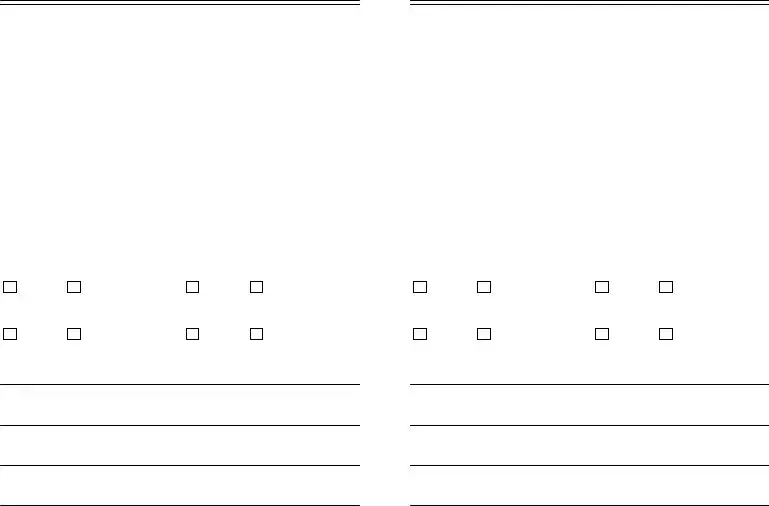The CHP 279 form shares similarities with the Form MV-1, used by vehicle owners to apply for title and registration in several states. Like the CHP 279, the MV-1 must be filled out completely to ensure accurate processing. Both forms require specific identifying information about the vehicle and the owner. Furthermore, just as the CHP 279 addresses owner responsibility for violations, the MV-1 includes a declaration of ownership and attestation of liability for the vehicle registered.
The Driver's License Application form parallels the CHP 279 in that it involves the acknowledgment of responsibility. This form requires applicants to provide personal details, similar to the company information required on the CHP 279. Both documents necessitate a signature affirming the truthfulness of the information provided, indicating a sense of accountability on behalf of the applicant or responsible party.
The Vehicle Liability Insurance Verification form operates in a fashion analogous to the CHP 279. Both documents serve to establish a connection between responsible parties and the potential consequences of vehicle operation. While the CHP 279 addresses owner responsibility in the context of code violations, the Insurance Verification form emphasizes proof of financial responsibility through insurance coverage, signaling both accountability and adherence to legal standards.
The Form 990, used for annual reporting by nonprofit organizations, also exhibits a resemblance to the CHP 279 due to its requirement for detailed reporting of organizational data and accountability. Similar to how the CHP 279 must be renewed annually, Form 990 must be filed once a year, ensuring ongoing transparency and awareness of organizational obligations.
The Incident Report form, completed by individuals post-accident, shares features with the CHP 279 regarding accountability and record-keeping. Both forms must be filled out thoroughly to document incidents accurately, allowing for assessments of responsibility. Moreover, both documents may involve law enforcement verification through citations or reports.
The Bill of Sale serves a comparable purpose to the CHP 279 in the documentation of ownership transfer. When a vehicle is sold, a Bill of Sale captures the transition of responsibility from seller to buyer. This transition aligns with the CHP 279’s focus on owner responsibility, as both forms clarify accountability related to vehicle use and compliance with regulations.
The Safety Inspection Report shares characteristics with the CHP 279 by ensuring compliance with safety regulations. Just as the CHP 279 demands that vehicle operators are accountable for their actions, the Safety Inspection Report holds vehicle owners responsible for maintaining safety standards in their vehicles. Both documents require confirmation of adherence to specific laws governing vehicle operation.
In a similar vein, the OSHA Safety Data Sheet (SDS) identifies hazards and outlines responsibilities regarding workplace safety. Like the CHP 279, the SDS is a formal document that delineates obligations and liabilities. While the CHP 279 focuses on vehicle-related responsibilities, both emphasize the need for documentation to ensure compliance and accountability in their respective domains.
The Permit Application for Commercial Vehicles also aligns with the CHP 279. Both require extensive information to verify the identity and responsibility of the applicant. The Permit Application establishes legal compliance for commercial operations, mirroring the CHP 279, which aims to detail responsibilities related to vehicle operation and code adherence.

